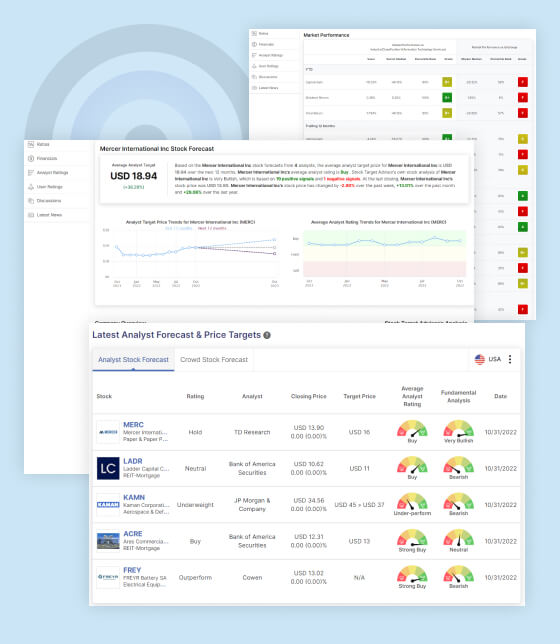Introduction
Investing in the stock market can be a lucrative way to grow your wealth, but with so many stocks to choose from, it can be overwhelming to decide where to put your money. That’s where a stock screener comes in. A stock screener is a tool that helps investors filter stocks based on specific criteria, such as price, industry, and financial ratios. By using a stock screener, you can quickly narrow down your options and find stocks that meet your investment goals.
In this article, we’ll explore what a stock screener is, how it works, and how it can help you make better investment decisions. We’ll also answer some common questions about stock screeners and provide tips for using them effectively.
What is a Stock Screener?
A stock screener is a tool that allows investors to filter stocks based on specific criteria. Think of it like a search engine for stocks. You input your criteria, and the screener returns a list of stocks that match your requirements.
Stock screeners can help you find stocks that meet your investment goals, whether you’re looking for growth stocks, value stocks, dividend stocks, or something else. Some of the criteria you can filter for include:
- Market capitalization
- Price-to-earnings ratio (P/E)
- Price-to-book ratio (P/B)
- Dividend yield
- Industries
- Revenue growth
- Net profit margin
How Does a Stock Screener Work?
Stock screeners use a database of stock information to filter stocks based on specific criteria. The database contains information such as stock prices, market capitalizations, financial ratios, and industry classifications.
When you input your criteria into the screener, it searches the database and returns a list of stocks that meet your requirements. The screener may also provide additional information about the stocks, such as their current price, dividend yield, and earnings per share.
How Can a Stock Screener Help You Make Better Investment Decisions?
A stock screener can help you make better investment decisions by allowing you to filter stocks based on specific criteria that are important to you. For example, if you’re looking for growth stocks, you can filter for stocks with high revenue growth rates. If you’re looking for value stocks, you can filter for stocks with low P/E ratios.
By using a stock screener, you can quickly narrow down your options and focus on stocks that meet your investment goals. This can save you time and help you avoid making impulsive investment decisions.
FAQs
What are some common criteria that investors filter for using a stock screener?
Some common criteria that investors filter for using a stock screener include market capitalization, P/E ratio, P/B ratio, dividend yield, industry, revenue growth, and net profit margin. These criteria can help investors find stocks that meet their specific investment goals, whether they’re looking for growth, value, income, or something else.
What are the advantages of using a stock screener?
The advantages of using a stock screener include:
- Time-saving: By filtering for specific criteria, you can quickly narrow down your options and focus on stocks that meet your investment goals.
- Eliminates emotion: A stock screener can help you avoid making impulsive investment decisions based on emotions or gut feelings.
- Better decision-making: By focusing on stocks that meet your criteria, you can make more informed investment decisions that align with your investment goals.
- Increased confidence: A stock screener can help you feel more confident in your investment decisions, knowing that you’ve done your research and filtered for specific criteria.
Are there any downsides to using a stock screener?
There are a few downsides to using a stock screener, including:
- Over-reliance: Using a stock screener too much can lead to over-reliance on the tool and a lack of critical thinking when making investment decisions.
- Limited scope: Stock screeners only filter stocks based on specific criteria, so they may not capture all of the nuances of a stock’s performance or potential.
- False positives: Stock screeners may return stocks that meet your criteria but aren’t actually good investment opportunities. It’s important to do your own research and analysis before making any investment decisions.
Tips for Using a Stock Screener Effectively
If you’re new to using a stock screener, here are some tips to help you use the tool effectively:
Define Your Investment Goals
Before using a stock screener, it’s important to define your investment goals. What are you trying to achieve with your investments? Are you looking for growth, income, or a mix of both? Once you’ve defined your goals, you can use the stock screener to filter for stocks that meet those goals.
Start with Basic Criteria
If you’re new to using a stock screener, start with basic criteria such as market capitalization, P/E ratio, and dividend yield. Once you’re comfortable with these criteria, you can start to add more advanced criteria such as industry and revenue growth.
Don’t Overwhelm Yourself
Stock screeners can return a large number of results, especially if you’re using multiple criteria. Don’t overwhelm yourself by trying to analyze too many stocks at once. Instead, focus on a few stocks that meet your criteria and analyze them in depth.
Do Your Own Research
While a stock screener can help you narrow down your options, it’s important to do your own research and analysis before making any investment decisions. Look at a company’s financial statements, management team, and competitive landscape to get a better sense of its potential.
Stay Up to Date
The stock market is constantly changing, so it’s important to stay up to date on market trends, news, and events that may impact your investments. Set up alerts or notifications for the stocks you’re interested in so you can stay informed.
Use Multiple Screeners
No single stock screener is perfect, so it’s a good idea to use multiple screeners to get a more comprehensive view of the market. Try using different screeners with different criteria to see what stocks overlap and which ones are unique.
Conclusion
In conclusion, a stock screener is a powerful tool that can help you make better investment decisions by filtering stocks based on specific criteria. By defining your investment goals and using basic and advanced criteria, you can narrow down your options and focus on stocks that meet your goals. However, it’s important to use stock screeners in conjunction with your own research and analysis to avoid over-reliance on the tool and false positives. With these tips and best practices, you can use a stock screener effectively to make informed investment decisions that align with your goals.
Remember, the question “What is a stock screener and how can it help you make better investment decisions?” is an important one for investors to consider. By understanding the benefits and limitations of using a stock screener, investors can use the tool effectively to find stocks that meet their specific investment goals.

STA Research (StockTargetAdvisor.com) is a independent Investment Research company that specializes in stock forecasting and analysis with integrated AI, based on our platform stocktargetadvisor.com, EST 2007.






























